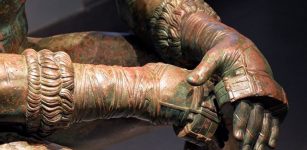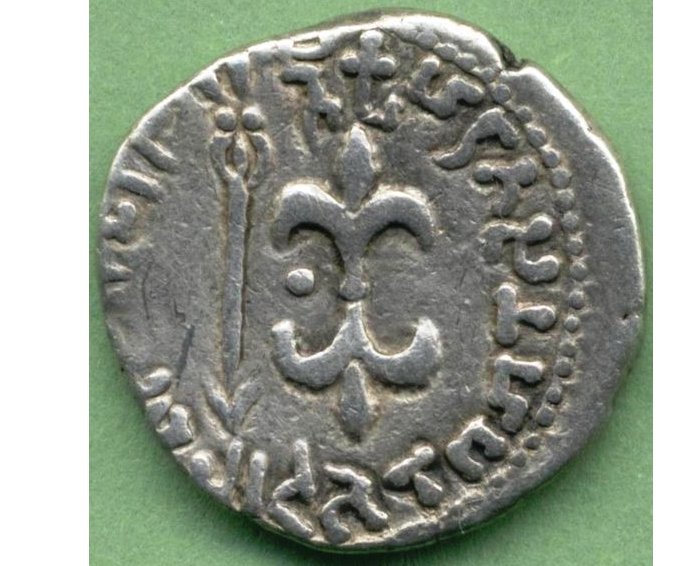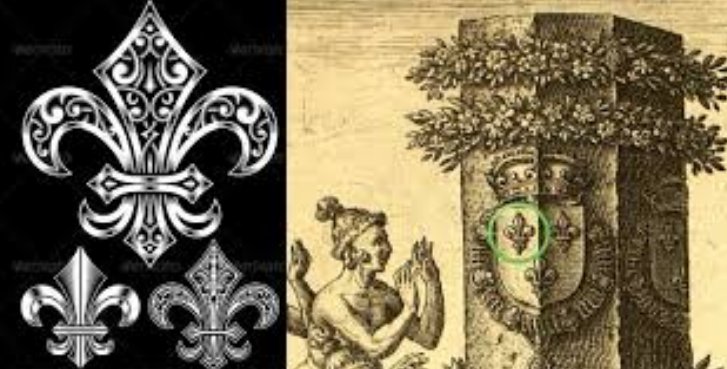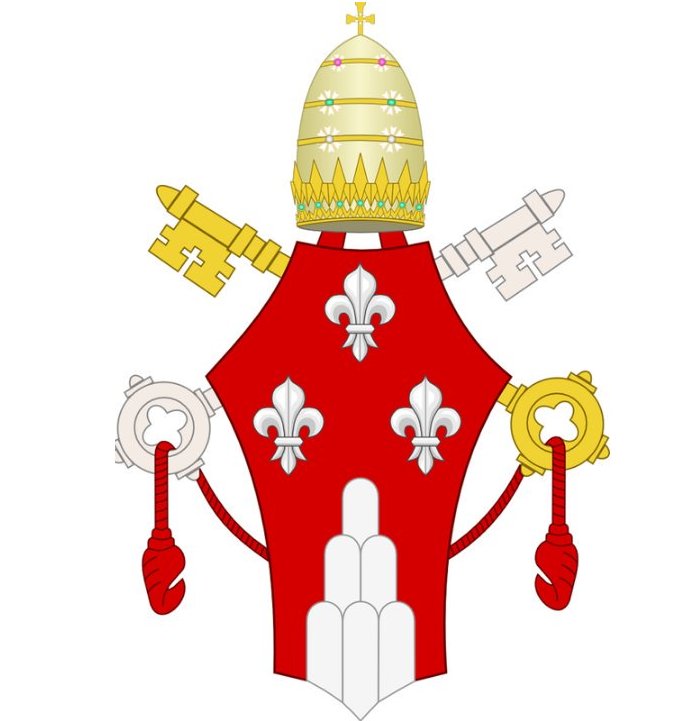Ancient Symbol Fleur-de-lis: It’s Meaning And History Explained
Ellen Lloyd - AncientPages.com - Fleur-de-lis, ( French: “lily flower”) is an ancient symbol that has long been associated with French royalty. Depicting a stylized lily or lotus flower we encounter the emblem in many places across the world.
What makes the Fleur-de-lis symbol special is how it has been used in different contexts. This symbol has represented peace, war, religion, politics, royalty, and more.
For example, Joan of Arc carried a white banner that showed God blessing the French royal emblem, the fleur-de-lis when she led French troops to victory over the English. The Catholic Church has used the Fleur-de-lis emblem for many years. The lily flower was a symbol of the Holy Trinity as well as an emblem of the Virgin Mary.
A number of military units use the symbol's resemblance to a spearhead to identify martial power and strength.
Why Is The Fleur-de-lis – Lily Flower A Symbol Of Royalty?
Fleur-de-lis (also 'fleur-de-lys') should not be confused with the Flower of Life, which is an ancient sacred geometry symbol and blueprint of the universe.
The fleur-de-lis symbol was sporadically used in Babylonian, Indian, Egyptian, and Roman architecture, but it is most associated with French royalty and the Church.

15th-century manuscript illumination of an angel sending the fleurs-de-lis to Clovis. From the Bedford Hours in the British Library, London. via Wikipedia
The fleur-de-lis' symbolic association with French monarchs may stem from the baptismal lily used in the crowning of King Clovis I.
An ancient legend tells, a golden lily flower given at his baptism to Clovis, king of the Franks (466–511), by an angel or even the Virgin Mary. The lily was said to have sprung from the tears shed by Eve as she left Eden. The lily flower was a symbol of his purification upon his conversion to Christianity.
According to another legend, Clovis adopted the symbol when waterlilies showed him how to safely cross a river and thus succeed in battle.

Charlemagne, by Albrecht Dürer, the anachronistic coat-of-arms above him shows the German eagle and the French Fleur-de-lis. Image credit: Albrecht Dürer - The Yorck Project (2002)/via wikipedia
The symbol has been regarded as a sign of purity ever since antiquity. The Roman Catholic Church adopted the Fleur-de-lis symbol to represent the Virgin Mary. When Pope Leo III in 800 crowned Charlemagne as emperor, he is reported to have presented him with a blue banner covered (semé) with golden fleurs-de-lis.
The symbol was later adopted by many European noble families, most notably the French monarchy, to establish an association with the Church.
In the twelfth century, either King Louis VI or King Louis VII became the first French monarch to use the fleur-de-lis on his shield.
In the 14th century, the fleur-de-lis was often incorporated into the family insignia that was sewn on the knight's surcoat, which was worn over their coat of mail, thus the term, "coat of arms." The original purpose of identification in battle developed into a system of social status designations after 1483 when King Edmund IV established the Heralds' College to supervise the granting of armor insignia.
See also:
12 Ancient Egyptian Symbols Explained
Ouroboros: Ancient Infinity Symbol Used By Different Ancient Civilizations
Well-Known Powerful Yin Yang Symbol Dates Back To Ancient China
How The Fleur-de-lis Symbol Became Popular On Other Continents
Knowledge of Fleur-de-lis crossed the Atlantic when French settlers reached the New World. Their presence on North American flags and coats of arms usually recalls the involvement of French settlers in the history of the town or region concerned, and in some cases, the persisting presence there of a population descended from such settlers.
The fleur-de-lis symbol also appears on the Canadian coat of arms, the flag of Quebec.
The Fleur-de-lis Symbol In Modern TImes
In modern times, we encounter the fleur-de-lis symbol in a variety of areas. It is a symbol associated with military, sport, education, scouting, and literature.
Written by Ellen Lloyd – AncientPages.com
Copyright © AncientPages.com All rights reserved. This material may not be published, broadcast, rewritten or redistributed in whole or part without the express written permission of AncientPages.com
Expand for referencesMore From Ancient Pages
-
 Mysterious Jade Cong – Perplexing Ancient Chinese Artifact
Featured Stories | Jan 3, 2023
Mysterious Jade Cong – Perplexing Ancient Chinese Artifact
Featured Stories | Jan 3, 2023 -
 Museum Classifies Roman Emperor Elagabalus As Trans – But Modern Labels Oversimplify Ancient Gender Identities
Featured Stories | Nov 28, 2023
Museum Classifies Roman Emperor Elagabalus As Trans – But Modern Labels Oversimplify Ancient Gender Identities
Featured Stories | Nov 28, 2023 -
 Bizarre And Rare Finds In Viking Houses – What Was Behind This Mysterious Practice?
Vikings | Nov 17, 2024
Bizarre And Rare Finds In Viking Houses – What Was Behind This Mysterious Practice?
Vikings | Nov 17, 2024 -
 Cooking, Roasting And Eating Of Root Plants Is 120,000-Year-Old Habit
Archaeology | Jun 7, 2019
Cooking, Roasting And Eating Of Root Plants Is 120,000-Year-Old Habit
Archaeology | Jun 7, 2019 -
 Unique Treasure Of 500 Coins Accidentally Found Under Church Floor In Slovakia
Archaeology | Apr 6, 2020
Unique Treasure Of 500 Coins Accidentally Found Under Church Floor In Slovakia
Archaeology | Apr 6, 2020 -
 Eastern Necropolis Of Ancient Thracian And Roman City Of Serdica – Unearthed
Archaeology | Apr 10, 2017
Eastern Necropolis Of Ancient Thracian And Roman City Of Serdica – Unearthed
Archaeology | Apr 10, 2017 -
 On This Day In History: Napoleon Exiled To Elba – On Apr 11, 1814
News | Apr 11, 2016
On This Day In History: Napoleon Exiled To Elba – On Apr 11, 1814
News | Apr 11, 2016 -
 Newport Ship: Experts Reassemble Medieval Vessel Found In The Mud
Featured Stories | Feb 7, 2023
Newport Ship: Experts Reassemble Medieval Vessel Found In The Mud
Featured Stories | Feb 7, 2023 -
 Secret Catacombs With Incredible Ancient Skeletons Covered In Priceless Jewelry
Featured Stories | Nov 20, 2018
Secret Catacombs With Incredible Ancient Skeletons Covered In Priceless Jewelry
Featured Stories | Nov 20, 2018 -
 The Hidden Face Of The Elusive Master
Ancient Mysteries | Jun 8, 2018
The Hidden Face Of The Elusive Master
Ancient Mysteries | Jun 8, 2018 -
 Mystery Of Ancient “Magical” Mirrors – Some Of The Strangest Objects In The World
Ancient Mysteries | Apr 21, 2011
Mystery Of Ancient “Magical” Mirrors – Some Of The Strangest Objects In The World
Ancient Mysteries | Apr 21, 2011 -
 Undiscovered Neanderthal Artifacts From The Ice Age Are Submerged Below The Waves Of The English Channel
Archaeology | Nov 23, 2022
Undiscovered Neanderthal Artifacts From The Ice Age Are Submerged Below The Waves Of The English Channel
Archaeology | Nov 23, 2022 -
 Minutes Did Not Exist During The Middle Ages
Ancient History Facts | Mar 2, 2016
Minutes Did Not Exist During The Middle Ages
Ancient History Facts | Mar 2, 2016 -
 What Did Bronze Age People Do With All That Bronze?
Featured Stories | Aug 5, 2024
What Did Bronze Age People Do With All That Bronze?
Featured Stories | Aug 5, 2024 -
 Rainbow Was A Powerful Symbol In People’s Ancient Beliefs
Ancient Symbols | Jul 26, 2018
Rainbow Was A Powerful Symbol In People’s Ancient Beliefs
Ancient Symbols | Jul 26, 2018 -
 Dinosaurs Were The First To Take The Perspectives Of Others
Fossils | Jun 1, 2023
Dinosaurs Were The First To Take The Perspectives Of Others
Fossils | Jun 1, 2023 -
 Mystery Of The Lost Beverina Castle – Did Knights Templar Know Where It Was?
Ancient Mysteries | Jan 21, 2018
Mystery Of The Lost Beverina Castle – Did Knights Templar Know Where It Was?
Ancient Mysteries | Jan 21, 2018 -
 On This Day In History: Vasco De Gama Departed On First European Voyage To India – On July 8, 1497
News | Jul 8, 2016
On This Day In History: Vasco De Gama Departed On First European Voyage To India – On July 8, 1497
News | Jul 8, 2016 -
 Boxer At Rest – Rare Sculpture And Masterpiece Of Hellenistic Bronze Art
Artifacts | May 21, 2021
Boxer At Rest – Rare Sculpture And Masterpiece Of Hellenistic Bronze Art
Artifacts | May 21, 2021 -
 Unpredictable Rainfall May Have Caused Disintegration Of Early Maya Societies
Archaeology | Apr 7, 2023
Unpredictable Rainfall May Have Caused Disintegration Of Early Maya Societies
Archaeology | Apr 7, 2023




